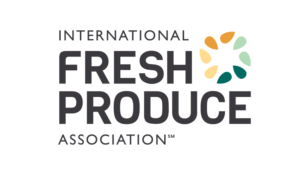Column: Putting sustainability into practice in produce production
I am constantly surprised by how companies are so creative with their sustainability practices in the produce and floral industries but yet so shy to share these stories.
A sustainability story is not only helpful for consumers to understand how their chosen products are grown and moved through the supply chain, but it’s especially important for other industry partners to learn, iterate and adapt.
 What makes a practice “sustainable” is bigger than simply what is good for the environment. We have to consider the impact on people and on the profitability of our companies. This is especially important in today’s environment where there are so many competing costs and external conditions that cut into company margins. While many sustainability strategies cost a lot upfront, and may result in savings or improved conditions over time, they do not typically have price impacts. This means, that with the exception of organic practices, consumers are not interested or willing to pay a premium on price because of a sustainability measure.
What makes a practice “sustainable” is bigger than simply what is good for the environment. We have to consider the impact on people and on the profitability of our companies. This is especially important in today’s environment where there are so many competing costs and external conditions that cut into company margins. While many sustainability strategies cost a lot upfront, and may result in savings or improved conditions over time, they do not typically have price impacts. This means, that with the exception of organic practices, consumers are not interested or willing to pay a premium on price because of a sustainability measure.
This puts pressure on companies to not only pursue sustainability strategies, but to be very thoughtful about how they apply these strategies. One example I’m always impressed by is Limoneira and its solar farm strategy. The company installed two solar projects — one at their headquarters and another is a photovoltaic orchard (solar farm) to capture energy. Not only will these projects reduce CO2 by 86,150 tons over a 25-year period but they’ve also reduced their electrical costs in California by around 70%.
The ability to take your company off the grid in our current cost climate is a great success.
Another great example is from ZZ2 in South Africa. The organization focuses on soil health and creating a solution that promotes soil health along with food safety and sustainability. Their composting program is a phenomenal example of sustainability and precision farming technology coming together to create a better product. Now, ZZ2 has a stable compost that has allowed for their switchover from inorganic fertilizers to compost and see nutrient boosts in products and soil. Of course, anything that can lift the dependency on fertilizers right now is a welcome opportunity with the unpredictability in the global market.
There are a lot of things that we would have done or could have done if we knew 10 to 15 years ago what we know now. While some of our major supply chain disruptions may be driving people towards more innovative solutions, other drivers include government regulations and new requirements from retailers.
Government regulations around sustainability are about 15 years behind that of food safety in terms of understanding and investment. Despite the urgency for sustainable practice innovation, the regulators need to understand that the industry needs help to learn and adapt these new strategies. Some companies are large enough to manage the cost and risk of new strategies, but many smaller or more specialized companies may need that support and guidance to transition age-old practices.
Cost of adoption is a major barrier to a company looking to expand their sustainability practices, especially, as I mentioned, there is no price bump. Cost is not the only challenge, though. Our products are incredibly susceptible to external factors including pests, weather changes, soil health and more. While there are practices that can improve on these conditions, addressing critical needs may override any long term possibilities.
Recognizing the difficulties of adapting sustainability practices, there are three major recommendations for a company who is asking themselves how they can get started.
- Invest in renewable energy. Cost of energy will continue to rise and the demand on our energy grids will continue to create challenges. Investing in renewable energy can help to provide more predictable costs in addition to less waste or negative outputs.
- Hire or contract an integrated pest management service. These specialized team members can take a look at your operation and help with pesticide usage.
- Invest and train people in plant nutrition. This includes the efficient and safe use of fertilizer which can be more sustainable and cut costs. This is also an opportunity to consider a shift to compost or organic fertilizer, especially as we see unprecedented pressures on our global fertilizer market.
The bonus advice would be to share your story. If you’re doing something great, sharing that with your partners, even if it feels small, can have an exponential impact on our industry.
— By Tamara Muruetagoiena, director of sustainability, International Fresh Produce Association








